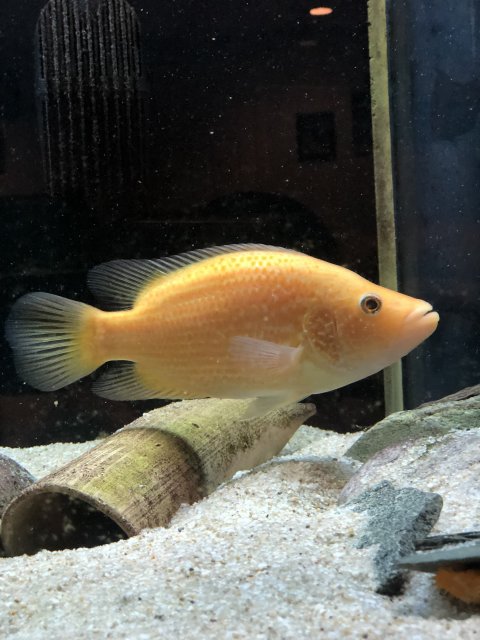Red (Xanthic) Dovii growth thread
- Thread starter MattyV55
- Start date
You are using an out of date browser. It may not display this or other websites correctly.
You should upgrade or use an alternative browser.
You should upgrade or use an alternative browser.
Mine all peeled by 2”
They still have a chance to peel at an older age, right?
They still have a chance to peel at an older age, right?
I posted the following several yrs ago with regards to the fading/peeling gene in Amphilophus. Different genus/species, but I suspect the same would apply.
The actual timing of de-pigmentation is determined by a different set of genes hence the reason why some fish seem to peel very early in life, while others are almost adult size before they begin to fade/peel. And of course in the wild fading/peeling at too early of an age/size makes the fish a much easier target for prey, so many wild morphs are late bloomers.
According to some of the earlier work performed by George Barlow, gold morphs are most abundant at deeper depths, and in more turbid water. Lake Masaya has very turbid water, and gold morphs are very abundant in this body of water. Lake Apoyo has quite clear water, and while the gold morph genes are present in the fish, no true gold morphs are found. The fish in this lake have the typical spotted & barred patterns.
I posted the following several yrs ago with regards to the fading/peeling gene in Amphilophus. Different genus/species, but I suspect the same would apply.
The actual timing of de-pigmentation is determined by a different set of genes hence the reason why some fish seem to peel very early in life, while others are almost adult size before they begin to fade/peel. And of course in the wild fading/peeling at too early of an age/size makes the fish a much easier target for prey, so many wild morphs are late bloomers.
According to some of the earlier work performed by George Barlow, gold morphs are most abundant at deeper depths, and in more turbid water. Lake Masaya has very turbid water, and gold morphs are very abundant in this body of water. Lake Apoyo has quite clear water, and while the gold morph genes are present in the fish, no true gold morphs are found. The fish in this lake have the typical spotted & barred patterns.
Ah, makes sense. Thank you for the insight.



